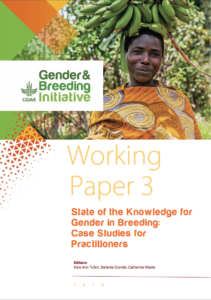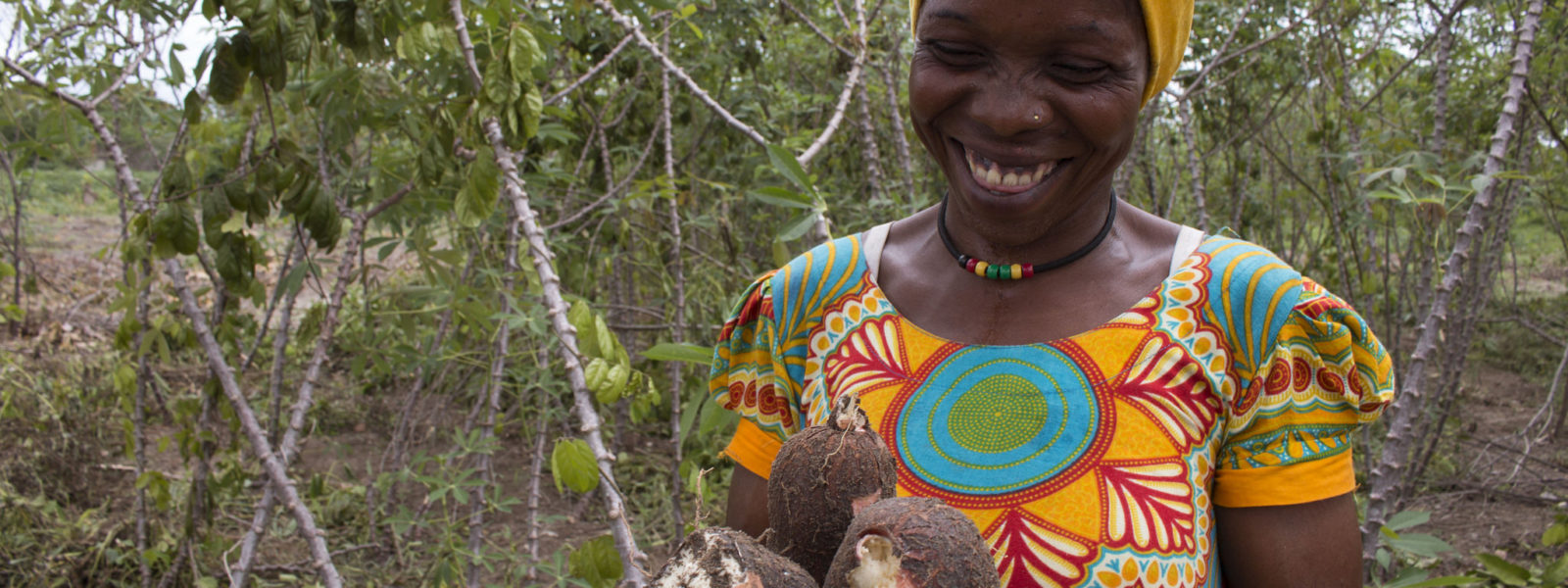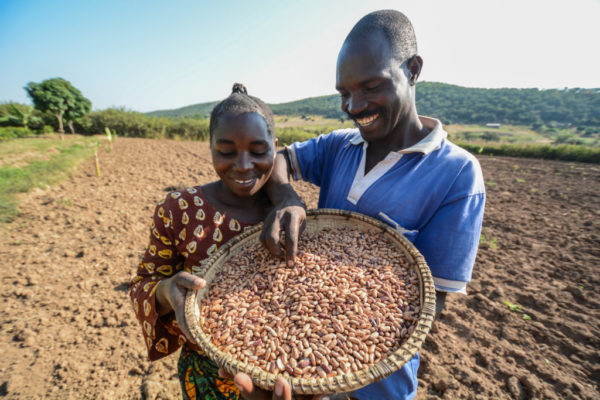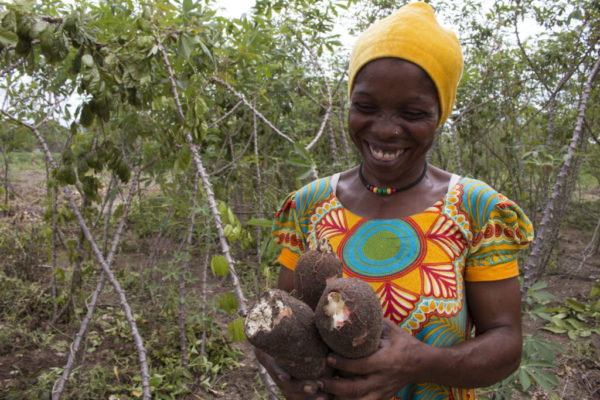Adoption and impact of new crop varieties and animal breeds depend on the tangible benefits these provide for the women and men involved in their production, consumption, processing and marketing. It is therefore important for breeders to understand and respond to the needs, priorities, and constraints that women and men assign to crop and animal products along the entire value chain. What steps can be taken for a breeding program to be gender-responsive and to ensure that breeding products have more equitable outcomes?
Many breeding programs, both within and outside CGIAR, recognized long ago the need for crop and animal breeding programs to consider gender differences, and have understood that if they overlook traits important to women farmers and consumers, they will not only further disempower these women, but also can aggravate household food insecurity and poverty.
However, breeding programs still do not have practical methods and decision-support tools that can be used routinely and can indicate how to be more gender-responsive and to understand the changes and the implications in breeding schemes. In addition, without convincing evidence—exemplified by case studies across commodities and countries—our arguments for gender-responsive research are often disregarded and dismissed.
We thought there was a major knowledge gap. The gender and breeding working group of the CGIAR Gender and Agriculture Research Network took the challenge and organized a workshop on gender, breeding, and genomics, with the aim of contributing to reduce this gap. The event, held in Nairobi, Kenya, on 18–21 October 2016, brought together a diverse group of experts in breeding, genomics, and social sciences that stimulated an active exchange of ideas, reflecting different perspectives and experiences. In preparation for the workshop, the group made an open call of case studies that could present experiences of gender-responsive breeding.
The workshop concluded that the knowledge and experience exist; however, are scattered in different sectors and disciplines and needs to be connected by a multidisciplinary team effort. The CGIAR Gender and Breeding Initiative (GBI) was launched to pull together a strategy for gender-responsive breeding with supporting methods, tools, and practices by the same interdisciplinary group of breeders and social scientists who participated in the 2016 workshop and convened the “Innovation in Gender-Responsive Breeding” workshop, held in Nairobi on 5–7 October 2017.
 This working document, entitled “State of the Knowledge for Gender in Breeding: Case Studies for Practitioners“, is part of a series of knowledge products designed to share the outputs from the 2017 workshop, and to share GBI’s collective knowledge more widely across CGIAR and partner breeding programs. The purpose of this case study synthesis is to identify illustrative cases of current approaches toward gender-responsive breeding programs and to highlight useful methods and lessons learned for practitioners.
This working document, entitled “State of the Knowledge for Gender in Breeding: Case Studies for Practitioners“, is part of a series of knowledge products designed to share the outputs from the 2017 workshop, and to share GBI’s collective knowledge more widely across CGIAR and partner breeding programs. The purpose of this case study synthesis is to identify illustrative cases of current approaches toward gender-responsive breeding programs and to highlight useful methods and lessons learned for practitioners.
By no means comprehensive, with these 10 cases we hope to emphasize the point that considering gender in breeding program design, working with women in the breeding process, and acting on these findings can have dramatic consequences on breeding programs. We begin by setting the scene with a chapter reflecting on how taking gender into account matters for the success of plant or animal breeding programs with welfare or development goals and a focus on smallholders. The case studies are then organized around steps of a plant breeding cycle, examining cases that consider gender in setting breeding priorities, selection, testing experimental varieties, and seed production and distribution.
The cases cover a wide range of commodities: beans, cassava, forage grasses, poultry, maize, sorghum, matooke, barley, and groundnuts. Although the majority of cases focus on sub-Saharan Africa, we also present one case from China and one from Syria. These cases not only provide evidence that men and women have different trait preferences, access to resources, or opportunities to engage in production, processing, and marketing of diverse commodities; they also illustrate what was done by the breeding programs to address these issues. In beans, “cooking time” was recognized as a must-have trait, the breeding program changed by incorporating such a trait in the selection process; in maize new opportunities for seed production and sale were created for women; in matooke breeding programs participatory processing for food quality was added. These are only a few examples, but are powerful illustrations that documenting differences is not enough—the real focus should be on change.
Finally, we did not intend to have a compilation of case studies that could be representative of breeding programs in general. The cases were selected for their unique interest as examples of ongoing experience of considering gender in different stages of the breeding cycle. Therefore, we cannot generalize about practice from the case studies but can draw some suggestions for promising approaches and lessons learned.
We hope that these cases, together with the companion publications from GBI on design principles, gender and social targeting, breeding decisions, and uptake pathways, compel and challenge breeding programs to become truly gender-responsive.
We hope you will find the working paper helpful and a source of inspiration to design and implement a gender-responsive breeding program. We are aware that this compilation is far from being exhaustive and many more cases are out there.
Please share the document through your institute, colleagues and networks.
Read the original post on the GBI website by Stefania Grando, Honorary Fellow, ICRISAT, India and International Consultant


